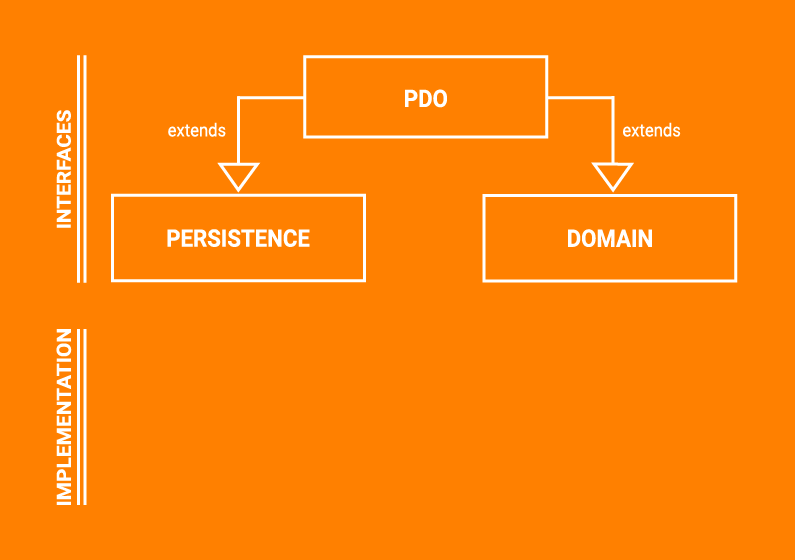Originally Tentackle has been developed for scientific and technical applications, where running the same domain logic not only in intermediate tiers but also at remote sites very often is an irrevocable requirement. However, business applications can benefit from its architecture as well, especially multi-tier Java FX desktop applications.
Jump Start
The easiest way to get your first application up and running is to use Tentackle’s maven archetype. Please follow the steps described here.
Documentation
As always, the code is the truth, but sometimes it’s nice to have some more in-depth documentation available.
The Persistent Domain Object
A persistent domain object (PDO) combines persistence- and domain-related features. However, Tentackle PDOs are not ordinary POJOs but POJIs: Plain Old Java Interfaces.
The PDO’s interface extends a persistence- and a domain-interface, that are implemented separately without any dependency to each other. This design brings the best of both worlds, the rich and the anemic domain model: implement the domain- and persistence logic within the same OO hierarchy, but keep them strictly separated!

Highlights
Distributed by design
Since entities and operations travel freely between JVMs, the ubiquitous language is available in all tiers.
JPMS Modularity
Tentackle is a modular framework from the ground up leveraging the features introduced with Java 9 (Jigsaw).
POJI
Applications are developed against interfaces, not implementations. Especially the precious domain logic does not depend on the persistence implementation.
Maven Plugins and Wizards
Tentackle provides several maven plugins to ease the development process. PDO and Operation wizards create the interfaces and implementations within the blink of an eye.
JLink images
Tentackle’s maven jlink plugin creates self-contained Java applications. No need for system-wide Java installations anymore. The plugin can be used for any kind of java application, not only Tentackle apps, even non-modularized or mixed.
Model driven
The domain model is defined in comment blocks right within the sources. During the maven build the model is parsed and the source code generated or updated accordingly.
No bytecode voodoo
There is no bytecode instrumentation and no classpath scanning. All necessary steps to analyze the application are performed at build time, thus reducing the startup time significantly.
Autoupdate
Tentackle provides an auto-update feature. Once installed the application automatically updates itself whenever a new version becomes available.
Immutable objects
PDOs can be immutable. For example, a component PDO not loaded from within its aggregate root’s domain context is automatically immutable.
Snapshots
Snapshots of entities, aggregates or parts of them provide a kind of “transactions in memory”. With snapshots it’s very easy to implement undo operations, for example.
History
Tentackle has been successfully used in many projects, mainly technical and scientific applications. During the years it has gone through several redesigns and major refactorings. Eventually, it became Open Source for “those who were interested”. Since 2016 the sources are hosted at Bitbucket and the artifacts are available from Maven Central. Finally, in 2020 we felt that Tentackle has reached a level of maturity, usability and well working tooling to introduce it to a broader public.
